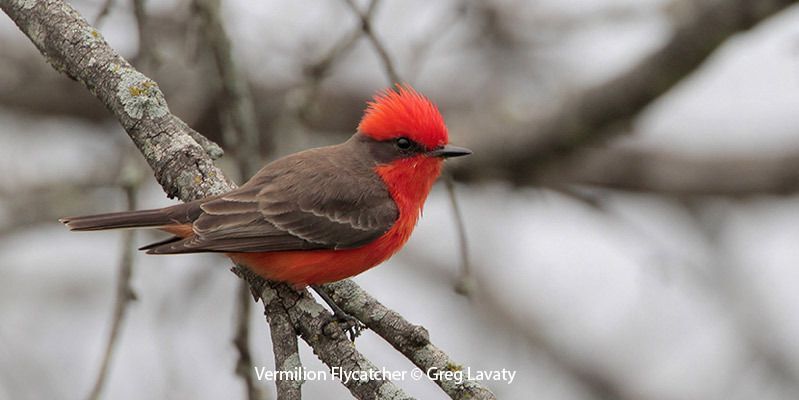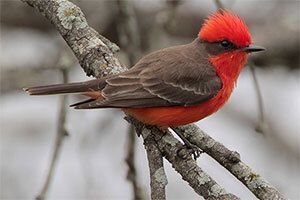
© Greg Lavaty
Vermilion Flycatcher
Pyrocephalus rubinus
Family: (Tyrannidae) Tyrant Flycatchers
Preferred Habitat: Rural areas near streams and ponds.
Seasonal Occurrence: Common late-November through March. Scarce in summer. Breeds in our area.
Profile by Glenn Olsen: It’s the month of December, most deciduous trees have lost their leaves, and the landscape is a soothing mix of grays and browns punctuated with bits of greens and yellow. I am standing at the edge of Elm Lake in Brazos Bend State Park looking for ducks and other marsh birds when the brilliance of a small, fire-engine red bird rocketing into the air grabs my attention! The Vermilion Flycatcher returns to the top of the dead brush from which it burst into the air to grab an unwary insect. This is the bird that I came to see and enjoy.
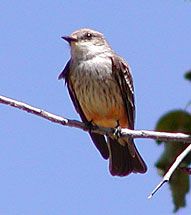
© Helen Baines
The adult male is unlikely to be misidentified with its brilliant red-orange crown and body, blackish wings, and dark eye stripe. Adult females and young males typically have salmon to pinkish under tail coverts, with pale gray upper parts, and off white beneath with varying degrees of faint streaking. The Vermilion Flycatcher breeds in riparian corridors and open oak woodlands of the arid regions of south and central Texas, New Mexico, and Arizona. The population density in the breeding range varies from rare to uncommon and localized.
The Vermilion Flycatcher graces our area with its presence during our cooler months, typically November through March, as it moves south and east of the breeding range to spend the winter months. We usually will have a few of these birds spread around the various counties of our area in the winter. They are most easily located near small to medium-sized ditches, ponds, and lakes. Here, they generally perch on small dead sticks low over the water, in the tops of dead trees, on limbs overhanging the water, or even on nearby fences. Christmas Bird Counts occur during the time these beautiful birds are in our area and are an excellent opportunity to get outdoors and enjoy this stunningly beautiful flycatcher.
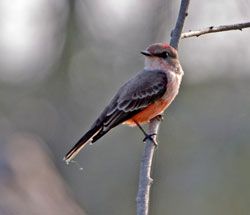
© Bill Duke
Profile by Jon Piasecki: Vermilion Flycatchers are a beautiful species that stand out in their natural habitat. Adult males have a remarkably vibrant red crown, throat, and belly with black wings, back and eye patch. Females tend to be brown/gray with a white breast and red-orange sides and belly. They occupy open, grassy habitats including farms, prairies, and deserts. They are predominantly found along the southern edge of the United States, Mexico, and Central and South America.
Vermilion Flycatchers are often seen perched on exposed tree and shrub branches, waiting for prey to fly by. Similarly to other flycatchers, this species catches its prey in mid-air typically flying out from its perch, catching an insect, and bringing it back to the perch in one swift motion. When capturing large prey like grasshoppers or even butterflies, Vermilion Flycatchers may strike the insect on the perch to further weaken it before eating. This species is also known to eat bees, crickets, and beetles.
Towards the end of the winter season, males may begin to perform mating displays. This involves flying high above surrounding vegetation, gliding back and forth, and singing a flight song. If a female becomes interested in the male, it will then join it flying in the sky and begin to look for possible nest locations. Nests are often built in trees near streams or other small waterways and are often covered with lichen for increased camouflage. Vermilion Flycatchers usually have 2 broods of 2-4 eggs. The female incubates the eggs and both parents help in feeding the chicks. After the breeding season, Vermilion Flycatchers disperse to wintering grounds usually on their own.
A handful of Vermilion Flycatchers have been seen throughout the Upper Texas coast this winter (2022-23) in places such as High Island, Anahuac and even the outer edges of Houston. Be sure to keep an eye out for these magnificent flycatchers!
-
Cornell Lab of Ornithology
-
Field Guide
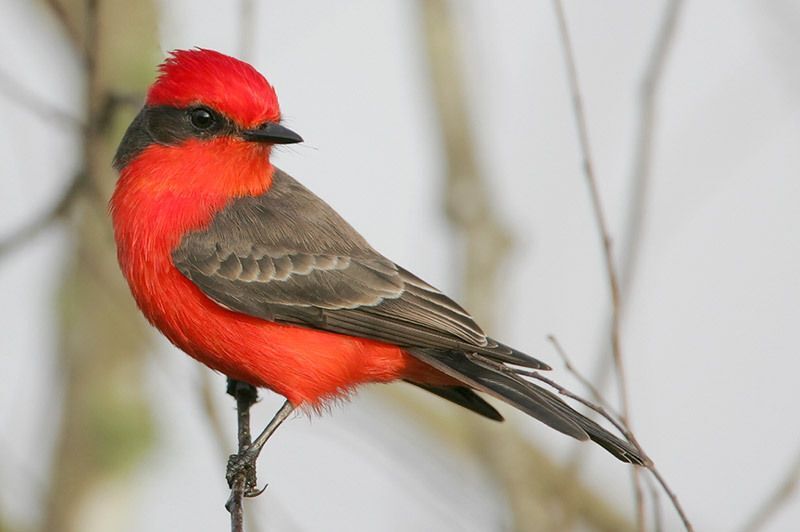
© Greg Lavaty, www.texastargetbirds.com
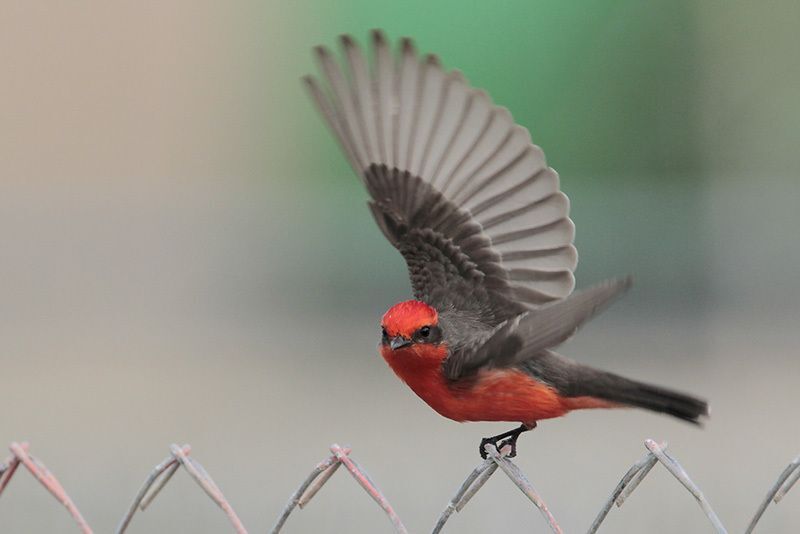
© Greg Lavaty, www.texastargetbirds.com
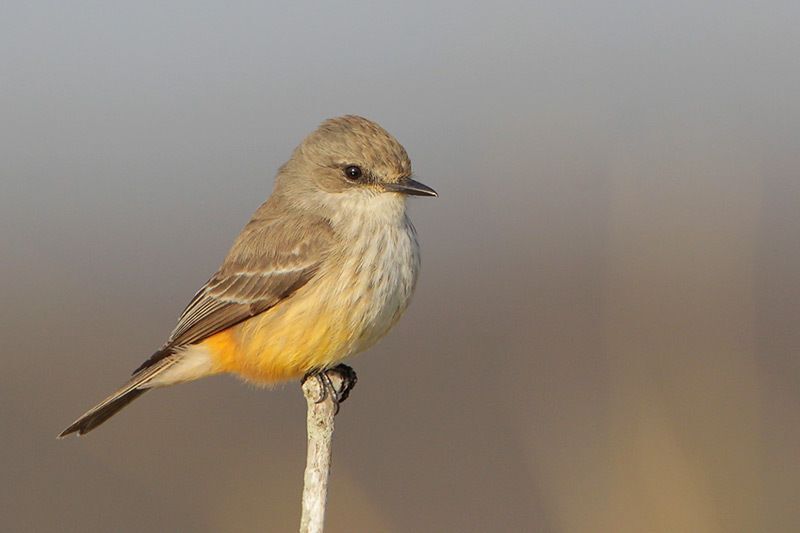
© Greg Lavaty, www.texastargetbirds.com
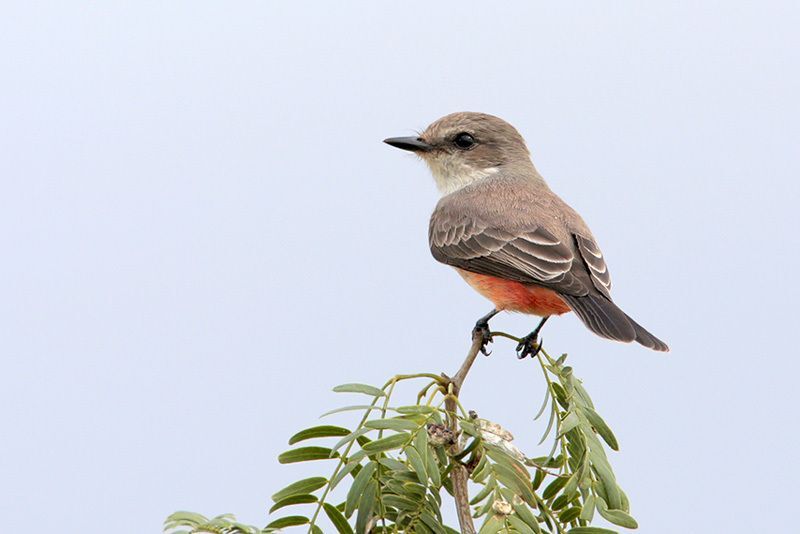
© Greg Lavaty, www.texastargetbirds.com
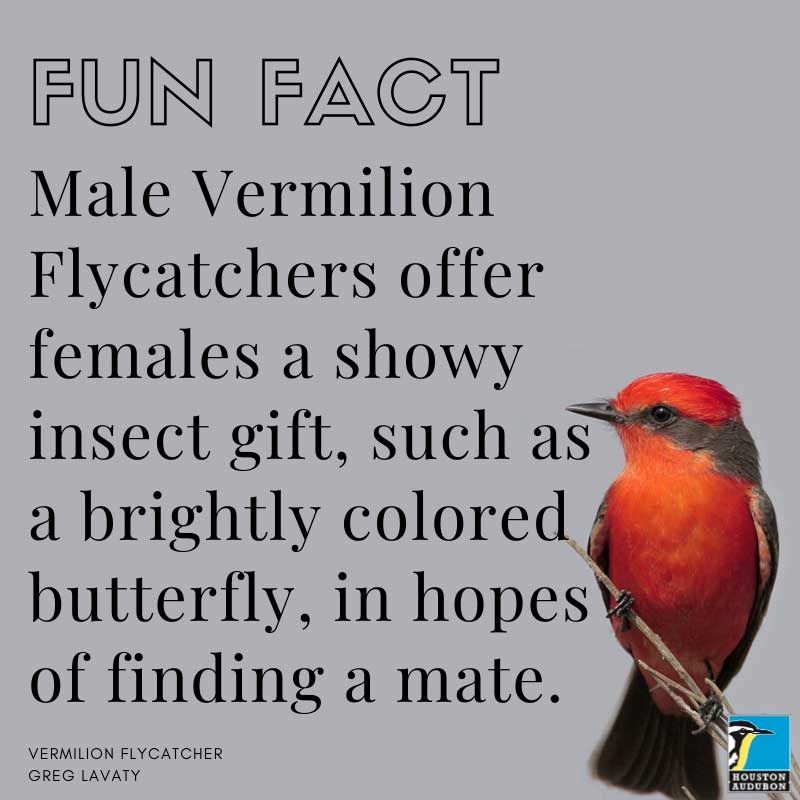
Hard to beat a showy insect gift! Did anyone get a fun nature-themed present this year?

